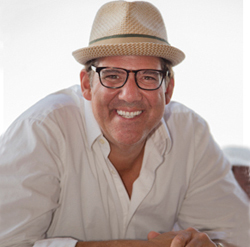
A Growing Enterprise
As L&M continued to expand, Mannarino made substantial investments in technology, including K-array loudspeakers, Midas consoles, and Sennheiser wireless systems. “When the economy tanked, I spent money I’d saved bringing loudspeakers to the U.S. that weren’t sold here. That’s when I met K-array. L&M grew because we took on K-array.”
Still, when asked if he would distribute K-array in the States exclusively, he initially declined. The company was resolute, noting how big of an impact he’d had as an ambassador of their brand. “People say I’m a great salesman, but I can only sell things I love and believe in,” he explains. “But if you love what you do, you find the energy to do it.”
Consequently, Mannarino took on the gig and formed K-array America in mid-2015. Shortly thereafter, he deployed a Firenze KH8 system at CityServe/CityFest, which featured multiple bands and evangelist Luis Palau on Central Park’s Great Lawn. “At the time we got the (contract for) event, I wasn’t sure we were going to be the distributor. I’d bought the Firenze KH8 rig the previous year, and doubled it for that event.”
Meanwhile, L&M is currently based in a 15,000-square-foot facility on Staten Island but is looking at expansion again, potentially doubling in size. The continuous growth has allowed him to involve his two sons in the business as well as to hire long-time friend and mentor Joshua Radin as director of sales. “It was a natural progression to bring people together for something we’re all passionate about, and that’s what every company I’ve had is based on.”
Paying Attention
During his career, Mannarino has designed and engineered for some of the biggest artists in music – across multiple genres – including Akon and Jay Z, Dizzy Gillespie, Paul McCartney and Jon Bon Jovi, Rihanna, Wynton Marsalis and the Lincoln Center Jazz Orchestra, among many. He’s also created systems and mixed in classic venues like Madison Square Garden, Carnegie Hall, The Beacon Theater, Lincoln Center, and The Hammerstein Ballroom, for theatres at educational institutions such as Columbia University, and at spaces that include the Metropolitan Museum of Art, Waldorf Astoria and MoMA.
How does he draw such a diverse group of artists and clients? “Initially, I think it was, ‘Let’s get that big guy who really loves music and smiles a lot’,” he replies. “It’s word of mouth. I’ve never advertised. I was always too busy. It’s been like that for 30 years.”
Mannarino’s approach to mixing is honest and forthright: “If I make a mistake, I say so. If I don’t know something, I say so.” Most importantly, he believes it’s often a matter of really listening when musicians try to express what they desire, offering an example of a sound check with a great acoustic guitar player who immediately asked for “something” in his monitors, but it wasn’t readily clear as to what that “something” actually was. He shut off the monitor, walked on stage, and listened from the guitarist’s perspective.
“Sometimes people can’t verbalize it exactly,” Mannarino notes. “He played, and from where he was playing it’s a completely different sound. After I turned the monitor back on and made the change, he asked, ‘Wow, how did you get that?’ I explained that what he’d asked for wasn’t exactly what he wanted.
“Here’s a more extreme example,” Mannarino continues. “When you mic a harp, people want as direct of a sound as possible to get good gain before feedback. Then, however, it doesn’t sound like a harp anymore; you’re getting nail clicks from the strings, for example. The instrument sounds different from five feet away. So how do you capture the harp given the physical restrictions of audio? You might not use the most expensive mic in the world. You’ll probably use a less expensive mic.
“It’s not about specific gear. If someone says, ‘I can’t get you the console you wanted, can you still mix the show?’ Of course I can. These are techniques that respect equipment and what manufacturers are offering. They’re tools. My approach is to use them to come up with what the musicians want to hear and be a part of their dynamic performances.
“I’d rather re-position a microphone than cut something in the EQ to fix issues. It’s about the sound being created. It’s not a perfect environment when we play live. It’s a marriage of the performer – their personality, equipment and artistry – as well as the venue, and the understanding of how they interact.”
“To put it another way,” he adds, “My goal is to try to listen to everybody first before I begin to attempt change.”
